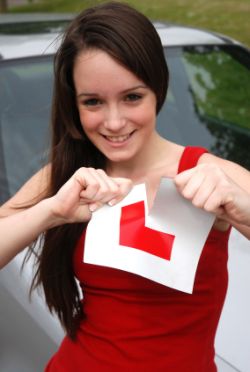Road conditions: dealing with fog
Fogs and mists are much more common at some times of the year than others. Particularly in the mornings and in the Autumn time of the year, fog can be commonplace, but whenever it occurs it is potentially dangerous.
This is because fog reduces visibility, and anytime your visibility is impaired in some way it is potentially dangerous.
You have to concentrate extra hard and ensure that you pay extra special attention to the road and the placement and speed of other drivers too. If you are driving in fog, then consider whether your journey is necessary and if not then turn back and head home.
If the journey is absolutely necessary, then you have fog lights on your vehicle that you should use. Ensure that you leave plenty of room in front of you if you are following a vehicle in fog, not just because it might take you longer to react to what they do but there can be a domino where they are slow to react to the car in front of them who is in turn slow to react to the car in front of them etc - and that's part of the reason why multiple pile-ups are one of the most common types of accidents that happens in foggy weather.
When you are at a junction in fog it is suggested that you rely on other senses in addition to your eyes. Therefore turn off the music, wind down the window and listen for other vehicles. You might be surprised actually how useful hearing can be in general when driving although many just rely on their eyes; you can hear a vehicle without being able to see it and this can alert you to its presence; this is particularly useful in conditions where sight is compromised such as when it is foggy.
Related Articles...
What to do if you breakdown at a level crossing
Driving is potentially dangerous, but it is important not to worry about things that could happen when driving but at the same time you should know what to do in the unlikely event that something...
Using head restraints
Your car will have head restraints in it, but do you take the time to adjust these before using the vehicle and ensuring they are set at the correct level for you? Head restraints in vehicles are...
What to expect at a hazard perception test
The test has fourteen different clips, as outlined in the article entitled 'how to pass the hazard perception test'.
Each of those clips starts counting down from ten to zero, in order to...
Driving and Eyesight Requirements
If you require glasses in order to meet the requirements for driving legally, then you must ensure that you wear them whilst you drive (or corrective lenses).
There are some conditions that...
Tips on driving in the country
Driving in the country can be quite a different experience to driving around towns and on motorways.
Firstly, depending where you are, the road quality can be very variable and bumpy and...
Regulations relating to stopping
When you are driving you may not necessarily think much about stopping and simply stop automatically when a light is on red. But infact knowing when you should stop on the road is very important...
What to do at a box junction
The box junction is quite common but despite this there are a whole wide range of ways in which different drivers interpret what they are supposed to do at them so you will see different behaviours...
Your car and the lights on it
We are all used to seeing cars in the dark, and also seeing their indicators in the day to communicate to other car drivers. But what must you ensure with regard to the lighting of your...
Why is there a Hazard Perception Test
The statistics have long shown that the newer the driver, the more likely they are to be involved in accidents on the roads. This is probably because they are inexperienced as drivers, although...
What to do at level crossings
When you are learning to drive you may well not come across a level crossing, depending where you live. But as a driver you certainly will come across level crossings and will need to know how to...
Back to home page of driving theory test questions

